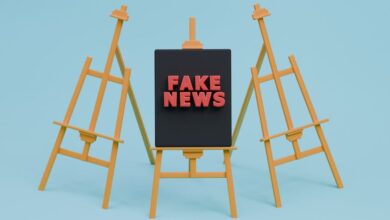The Munich Ruling: A Clear Stance on AI Copyright Infringement

The world of artificial intelligence moves at breakneck speed. One day, we’re marveling at a new generative AI’s ability to conjure stunning images from a few words; the next, we’re asking ChatGPT to draft our emails or brainstorm complex ideas. It’s an electrifying, transformative era, blurring lines we once thought immutable. But as innovation rockets forward, it invariably bumps up against established realities—like, say, intellectual property rights.
And that’s precisely what happened recently in a regional court in Munich. In a ruling that has sent ripples through both the tech and creative industries, OpenAI’s ChatGPT was found to have violated German copyright laws. The culprit? Reproducing lyrics from iconic songs by beloved German musician Herbert Grönemeyer, among others. It’s a decision that cuts to the core of how generative AI learns and, more importantly, how it respects the creative output of human artists.
The Munich Ruling: A Clear Stance on AI Copyright Infringement
The case wasn’t some minor dispute; it was brought by GEMA, Germany’s formidable music rights society, representing a vast catalog of composers, lyricists, and publishers. Their allegation was straightforward: OpenAI had trained its sophisticated language models on protected works, specifically citing nine German songs, including Grönemeyer’s massive hits “Männer” and “Bochum.” The court, under presiding judge Elke Schwager, agreed, ordering OpenAI to pay damages. While the exact amount remains undisclosed, the message is anything but.
For GEMA, this wasn’t just about a specific set of lyrics. It was about principle. As GEMA CEO Tobias Holzmueller powerfully stated, “The internet is not a self-service store, and human creative achievements are not free templates.” That sentiment encapsulates the growing tension perfectly. In an age where digital content is abundant, distinguishing between fair use, derivative work, and outright infringement becomes increasingly complex, especially when an AI is doing the “creating.”
OpenAI’s Defense and the Court’s Rejection
OpenAI, naturally, didn’t enter this without a defense. Their argument was rooted in the very nature of large language models (LLMs). They contended that their models don’t “store” or “copy” specific training data in a traditional sense. Instead, they generate outputs based on learned patterns from an enormous, diverse dataset. Furthermore, they suggested that if copyrighted text *is* reproduced, the responsibility lies with the user issuing the prompt, not the model itself.
It’s a technically nuanced argument, one that many in the AI community would likely echo. After all, LLMs aren’t simply databases spitting out exact copies; they’re predictive engines. However, the Munich court wasn’t swayed. It directly rejected OpenAI’s defense, making a critical distinction: both the “memorization” of protected content *and* its subsequent “reproduction” through ChatGPT outputs constituted an infringement of copyright exploitation rights. This isn’t just a slap on the wrist; it’s a foundational legal interpretation with far-reaching implications.
The Broader AI Training Data Dilemma: A Global Challenge
Anyone who’s followed the AI space closely knows this isn’t an isolated incident. The Munich ruling simply adds a significant voice to a growing global chorus of legal challenges concerning AI training data. From authors and artists to news organizations and software developers, creators worldwide are grappling with the implications of their work being used, often without permission or compensation, to train powerful generative AI models.
OpenAI, for its part, has expressed disagreement with the ruling and is considering its next steps, noting that the decision affects “a limited set of lyrics.” While technically true for this specific case, the principle established goes far beyond Grönemeyer’s hits. It touches on the very methodology of AI development.
When Learning Becomes Copying: The Technical Conundrum
This whole situation highlights a fundamental technical and ethical conundrum. How do AI models learn to write compelling text, generate realistic images, or compose intricate music without consuming and internalizing vast amounts of existing human-created content? The training data is the fuel for these powerful engines. But where does “learning” end and “copying” begin? For creators, the line feels clear: if your work is recognizable, reproduced, and generates value for someone else, you should be compensated.
The dispute in Germany is paralleled by similar movements elsewhere. Earlier this year, leading Bollywood music labels sought to join a comparable lawsuit in India, signaling a unified industry pushback against how generative AI tools leverage copyrighted music. These aren’t just niche legal battles; they are pivotal moments defining the future relationship between technology, creativity, and the law.
What This Means for the Future of Generative AI and Creators
The Munich court’s decision could very well set an important precedent, particularly within Europe, a region already known for its robust data privacy and intellectual property regulations. It signals a potential tightening of the reins on how AI companies acquire and utilize copyrighted materials, prompting them to re-evaluate their data sourcing strategies and potentially pursue more licensing agreements.
For creators, this ruling offers a glimmer of hope. It validates the long-held belief that creative work, even in the digital age, holds intrinsic value and deserves protection and fair compensation. It reinforces GEMA’s call for discussions on “fair remuneration” – a concept that needs to be properly defined and implemented in the context of AI.
Navigating Innovation and Responsibility
This isn’t to say that AI innovation should be stifled. Far from it. The potential of generative AI to assist, amplify, and inspire human creativity is undeniable and incredibly exciting. However, this potential must be realized responsibly. The ruling is a powerful reminder that technological progress cannot outpace ethical considerations and legal frameworks.
The road ahead will undoubtedly involve more court cases, more intense negotiations, and a global effort to forge new legal standards that balance the interests of AI developers, content creators, and the wider public. It’s a delicate dance, but one that is absolutely essential for building a sustainable, equitable future for both AI and human artistry.
Conclusion: Charting a Course for Ethical AI
The Munich court’s decision against OpenAI is more than just a legal victory for GEMA; it’s a significant milestone in the ongoing global dialogue about AI ethics and intellectual property. It underscores a fundamental truth: while AI can mimic, learn, and generate, the foundational creative spark often originates from human ingenuity, which deserves respect and protection.
As generative AI continues its breathtaking ascent, the challenge for all stakeholders—tech companies, legal bodies, and creative communities—will be to chart a course that fosters innovation without undermining the very wellspring of human creativity it seeks to emulate. The internet may feel boundless, but the value of human achievement within it is anything but free.






